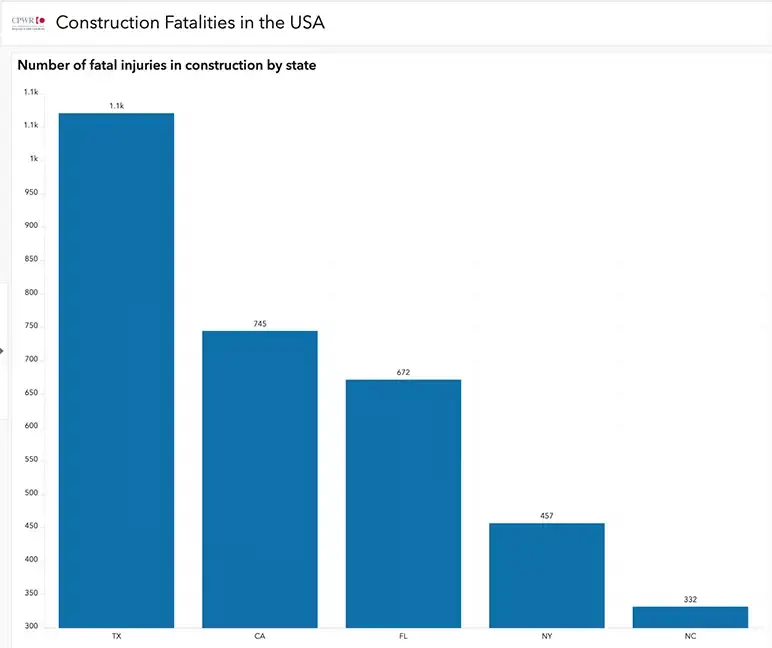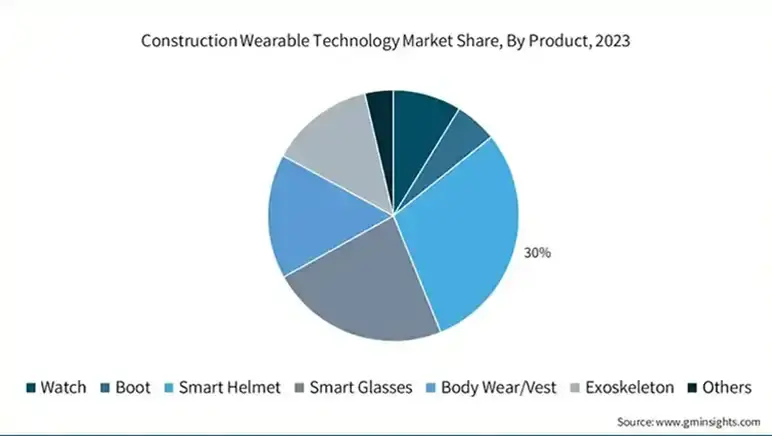The construction industry is vast, producing a wide range of materials, products, and jobs for millions. Each year, it evolves, setting new milestones that fuel employment, GDP growth, and infrastructure development across both private and government sectors.
Staying updated on past trends and 2025 market projections is crucial; why?
With evolving market trends, shifting costs, and emerging technologies, every change influences jobs, investments, and industry growth.
Hence, staying updated provides you with a competitive edge. Let’s explore these stats and use them to stay ahead in the dynamic construction industry.
Top Construction Industry Statistics 2025 (Top Findings)
- The global construction market size is projected to grow at a compound annual growth rate (CAGR) of 4.2% from 2023 to 2030, reaching a market size of $14.4 trillion by 2030.
- In the United States, construction spending surpassed $2 trillion in 2024, with further moderate growth anticipated due to easing inflation and supportive monetary policies.
- The industry continues to face labor shortages, with 85% of construction firms reporting difficulty in filling positions due to a lack of skills.
- The Global Green Building Market is valued at $754.3 billion in 2024 and is projected to reach $1,418.6 billion by 2030, experiencing a CAGR of 11.1% over the forecast period.
- BIM (Building Information Modeling) adoption is increasing, with over 70% of construction firms in developed countries like Germany using BIM for project planning and management.
- The Global Modular Construction Market is expected to expand at a CAGR of 6.5% between 2024 and 2030.
- The concept of smart cities is driving demand for IoT-enabled infrastructure. The global smart cities market is expected to reach $1.7 trillion by 2025.
- The digital twin market in construction is expected to grow at a CAGR of 30% from 2023 to 2030.
- The construction industry generates 30% of the world's waste, prompting a push for more sustainable practices.
- Construction productivity has grown by only 1% annually over the past two decades, highlighting the need for innovation.
- The global construction workforce is expected to reach 300 million by 2030, up from 220 million in 2020.
What is the Outlook for the Construction Industry?
| Category | Details |
|---|---|
| Predicted construction industry size in the USA (2024) | $1.8 trillion |
| Fastest-growing region (2023-2030) | Asia-Pacific (40% of global output) |
| Average age of construction workers | 42 years |
| Number of US construction workers (2023) | 7.56 million |
| Global average fatality rate in construction | 2.61 per 100,000 workers |
| Top causes of fatalities | Falls, electrocutions, struck-by objects, and equipment-related accidents |
| Countries with the lowest accident rates | Sweden, Germany, and Singapore |
| Smart Cities market size (2025) | $1.7 trillion |
| The best region for technological adoption | North America (highest adoption of BIM, drones, and AI in construction) |
| The best region for infrastructure investment | Asia-Pacific (China and India leading in large-scale infrastructure projects) |
| Best region for sustainable construction | Europe |
Top Construction Industry Statistics 2025
This section highlights the key statistics and trends that will shape the future of the construction industry in 2025. From market growth and technological adoption to workforce dynamics and safety improvements, these insights provide a snapshot of what to expect in the coming years. Let’s explore:
Global construction industry statistics
The global construction market is projected to reach $19.59 trillion by 2032; with a significant portion of this growth occurring in upcoming years, it is crucial to learn the global stats that will drive the construction sector and help you make informed decisions. Here's the list of construction market stats:
- The global construction market is projected to grow from $16,152.39 billion in 2024 to $17,045.95 billion in 2025, reflecting a compound annual growth rate (CAGR) of 5.5%. (Source)
- The Global Construction 2025 report, analyzing 46 countries, forecasts a total industry revenue output of $15 trillion in 2025, marking a 70% increase from 2012. China, the U.S., and India—three of the largest construction markets—are expected to contribute nearly 60% of the global total. (Source)
- In 2023, the global residential construction market was valued at $5.29 trillion, reflecting a compound annual growth rate (CAGR) of 2.4% from 2018 to 2023. (Source)
- According to a new U.K.-based global forecast, the U.S. is projected to lead construction market growth in the industrialized world, with an average annual growth rate of 4% through 2025. (Source)
- Construction spending accounts for 13% of global GDP, with approximately 8.3 million people employed in the industry as of October 2024. (Source)
- Leading companies driving the global construction industry include Vinci (France), China State Construction Engineering Corporation (China), China Communications Construction Company (China), Skanska (Sweden), Bouygues (France), Larsen & Toubro (India), and NCC Ltd (India). These firms, supported by key market drivers, play a significant role in shaping the industry's growth. (Source)
- The rate of 9.6 fatalities per 100,000 workers highlights the significant risks and tough conditions that construction crews encounter daily on-site. (Source)
Women in construction statistics
Approximately 13% of all construction companies are now women-owned, marking a 94% increase since 2007. These numbers highlight the significant growth in women's participation in the construction industry.
Furthermore, with continued growth anticipated, let's dive into more construction industry facts and statistics to stay updated on women's share in this industry:
- In the US construction industry, women made up only 10.8% of the construction workforce in 2023, which was 0.1% lower than in 2022, which was 10.9%. (Source)
- Breakdown of women's roles in the construction industry: (Source)
| Role | Percentage of Women in Construction |
|---|---|
| Sales and Office Roles | 36.10% |
| Management Roles | 36.10% |
| Construction and Maintenance Roles | 24.60% |
| Transportation Roles | 2% |
| Service Roles | 1.20% |
- In India's domestic construction and real estate sector, which employs 57 million workers, 50 million are men, while only 7 million are women. (Source)
- According to an analysis by the CIPD, construction companies reported the largest gender pay gap of any sector in the 2021-22 financial year, with a gap of 23.7%. (Source)
- In the first quarter (Q1) of 2024, the gender ratio dropped to 13.6%, marking the lowest level since the Covid pandemic. The last time women represented less than 14% of construction workers was in the final quarter of 2020. (Source)
- Overall, 80% of women express that they enjoy their work in the construction industry. Additionally, 76% believe that the role of women in construction is improving, up from 70% last year. (Source)
- Unmarried mothers are significantly more likely to participate in the labor force compared to married mothers. In March 2020, 77.7% of unmarried mothers were employed, while 70.4% of married mothers participated in the workforce. (Source)
Construction fatality statistics
The construction process is a high-risk sector with significant daily hazards. Despite safety advancements, fatalities remain a major concern. This section highlights key statistics on construction fatalities, including global data, leading causes, and high-risk roles.
1) According to the Bureau of Labor Statistics Census of Fatal Occupational Injuries, the construction industry recorded 1,075 fatalities in 2023. (Source)
This marks the highest number of workplace deaths since 2011 and represents a fatal work injury rate of 9.6 deaths per 100,000 full-time equivalent workers. This alarming statistic underscores the urgent need for enhanced safety protocols and stricter enforcement of regulations to protect workers.
2) Approximately 1% of construction workers suffer a fatal injury each year, making it the industry with the highest workplace fatality rate. (Source)
Falls, being struck by equipment, getting caught between objects, and electrocutions are the leading causes of construction fatalities, responsible for 65% of all deaths in the industry. In 2022, falls, slips, and trips were the primary causes of fatal accidents, resulting in 423 out of 1,056 total deaths in the USA.
3) Construction fatality in USA (Source)
Construction industry injury statistics
- In 2022, there were approximately 169,600 recordable cases of injury and illness reported in the construction industry, making it one of the sectors with the highest rates of workplace injuries. (Source)
- About 1% of construction workers suffer an injury serious enough to require time off work each year. (Source)
- Construction injuries often result in extended absences; roughly 40% of construction injuries lead to multiple days away from work, indicating the severity of these incidents. (Source)
- Construction workers face a higher risk of traumatic brain injuries, around 20-25%, than those in any other industry due to the hazardous environments in which they operate. (Source)
- Over 1 million construction workers are treated in emergency rooms annually for hand injuries, highlighting a critical area for safety improvements. (Source)
- A staggering 65.5% of all construction deaths result from what are known as "Focus Four" incidents. (Source)
| Cause of Fatality | Percentage of Total Construction Deaths |
|---|---|
| Falls | 35% |
| Struck-by Incidents | 17% |
| Electrocution | 7.60% |
| Caught-in/Caught-between Incidents | 5.80% |
| Total ("Focus Four") Fatalities | 65.5% of all construction deaths |
- Workers aged 20-24 years have the highest nonfatal injury rate, with a rate of 150.8 per 10,000 FTEs, indicating a greater vulnerability among younger workers. (Source)
- In 2022, construction workers experienced 4.5 million medically consulted injuries. (Source)
Construction safety statistics
1) In 2023, the worker safety segment accounted for over 40% of the construction wearable technology market and is projected to exceed USD 3.4 billion by 2032. (Source)
Governments and regulatory agencies worldwide are prioritizing workplace safety, especially in high-risk sectors like construction projects. Organizations such as OSHA in the U.S. and equivalent regulatory bodies in Europe and Asia enforce stringent safety standards on building construction sites.
2) In 2023, the smart helmet segment accounted for approximately 30% of construction wearable technology. (Source)
3) In 2023, personal protective equipment held over 45% of the construction worker safety market, highlighting its crucial role in hazard protection. (Source)
Importantly, North America led the global building construction worker safety market, holding approximately 34% share, driven by strict safety regulations, a strong safety culture, and a thriving construction sector.
4) Key companies in the construction worker safety industry include: (Source)
| Company Name | Country of Origin |
|---|---|
| Honeywell | United States |
| Delta Plus Group | France |
| DuPont | United States |
| Drägerwerk AG & Co. KGaA | Germany |
| MSA Safety Incorporated | United States |
| 3M | United States |
| Ansell Limited | Australia |
Construction employment statistics
The construction industry is a major global employer, but it faces significant challenges in attracting and retaining workers. Issues such as a lack of skilled labor, eligibility requirements, and safety concerns—including the fear of fatalities are the main concerns. Here are some key statistics highlighting employment rates, challenges, and concerns within the construction industry:
- In January 2023, approximately 7.8 million workers—accounting for 4.9% of the U.S. workforce—were employed in the building construction sector. (Source)
- In 2024, the US construction activities needed 500,000 new workers to meet demand, driven by a 4.6% unemployment rate—the second lowest on record—and 400,000 average job openings per month. (Source)
- Construction laborers earn an average hourly wage of $21.50, placing them at the lower end of the pay scale. In contrast, construction managers earn $52.02 per hour, translating to an annual salary of $108,210, positioning them at the top of the pay scale. (Source)
- Construction employment is expected to grow by only 1.5% between 2022 and 2032, significantly lagging behind the average job growth rate of 2.8% across all industries. (Source)
- As of December 2023, the construction industry reported an unemployment rate of 4.5%. (Source)
- Despite a widespread talent shortage, construction industry employment rose to 8.3 million in July 2024, exceeding its previous peak of 7.7 million in 2006. (Source)
- 80% of contractors in the USA report difficulty finding skilled workers, highlighting a critical challenge for the industry. (Source)
- Construction and building inspectors earn a median salary of $63,920, with the lowest 10% making under $39,520 and the top 10% earning over $104,420. (Source)
- India's booming construction sector is projected to generate up to 30 million new jobs by March 2030, expanding the workforce beyond its current 70 million. In contrast, developed nations like the UK and Australia are grappling with labor shortages in the construction industry. (Source)
- Construction laborers and helpers earn a median salary of $38,760, with the lowest 10% making under $29,550 and the top 10% earning over $64,320. (Source)
- 1 in 5 construction industry workers are employed in management, business, and financial operations. (Source)
| Occupation | Total Construction Employment |
|---|---|
| Construction and Extraction | 59.40% |
| Management, Business, Financial Operations | 20.50% |
| Installation, Maintenance, and Repair | 6% |
| Office and Administrative Support | 5% |
| Transportation and Material Moving | 3% |
| Computer, Engineering, and Science | 3% |
| Other Occupations | 4% |
- The highest-paying metropolitan areas for construction workers include Trenton, San Francisco, Chicago, Boston, and San Jose. The average average salary that workers get is as follows: (Source)
| Metropolitan Area | Average Salary |
|---|---|
| Trenton, New Jersey | $73,740 |
| San Francisco, California | $71,110 |
| Chicago, Illinois | $69,370 |
| Boston, Massachusetts | $69,180 |
| San Jose, California | $69,080 |
- 91% of construction firms are struggling to find workers to hire, leading to increased costs and delays in projects. (Source)
Construction technology statistics
From AI-powered project management tools to 3D printing and drones, technology is reshaping the construction industry rapidly. Here are a few stats that demonstrate the impact of technology on construction:
- The construction technology market is projected to be valued at $5.66 billion in 2025 and is expected to grow to $10.34 billion by 2030, expanding at a CAGR of 12.8% during the 2025-2030 forecast period. (Source)
- In developed countries, 70% of construction firms utilize Building Information Modeling (BIM) for project planning and management. (Source)
- Technologies like 3D printing, drones, and robotics are gaining traction, with 3D printing expected to grow at a staggering CAGR of 245.9%. (Source)
- A report by Construction Today states that 25% of UK construction companies now incorporate AI into their project planning. (Source)
- The Construction Wearable Technology Market was valued at USD 4.1 billion in 2023 and is expected to grow at a CAGR of over 10% from 2024 to 2032, driven by the rising emphasis on worker safety. (Source)
- China, the U.S., and India are driving this growth, with construction output projected to increase by 85% to reach $15.5 trillion by 2030, fueled by technological advancements and sustainability initiatives. (Source)
- The AI in Construction Market is expected to expand from USD 0.67 billion in 2024 to USD 2.87 billion by 2032, reflecting a robust CAGR of 32.66% during the forecast period (2024–2032) (Source)
- 82% of contractors utilize mobile apps to collect field data in their construction projects. (Source)
- The global modular construction market is expected to reach $114.78 billion by 2028. (Source)
- Around 90% of construction firms utilizing prefabrication have reported enhanced quality and increased productivity. (Source)
- 26% of construction firms in the UK lack a defined technology strategy. Only 50% of professionals state that enhancing digital skills will be a priority for their business in the next three years. (Source)
- The IoT in the construction market is expected to grow to $19 billion by 2027. (Source)
- In the United States, mobile inspection technology and advanced e-permit systems have cut on-site inspections by 25% and reduced approval times by 30%. (Source)
- The construction industry remains one of the least digitized sectors. (Source)
- Despite advancing toward automation, 78% of contractors still rely on a combination of software automation and spreadsheets. (Source)
Construction mental health statistics
Mental health challenges in the construction industry are a widespread concern. The following statistics highlight the urgent need to improve support systems for workers facing these struggles.
- A 2021 report revealed that the suicide rate among construction workers was 34 per 100,000—nearly four times higher than the national average. (Source)
- Approximately 15% of construction workers in the U.S. struggle with substance abuse disorders, nearly double the 8.6% rate among the general adult population. (Source)
- Around 40% of construction workers identify anxiety as a major factor affecting their mental health, while 28% report experiencing fatigue. (Source)
- Mental health conditions lead to around 70 million sick days in the construction field each year in the UK, costing the economy between £70bn and £100bn annually. (Source)
- The construction industry has the highest overdose death rate and the second-highest suicide rate among all U.S. industries. Studies show that 23.1% of overdose deaths and 17.9% of suicides occurred among construction workers. (Source)
- In 2023, more than 50% of construction workers in the UK reported experiencing mental health challenges. (Source)
- Among construction workers, certain groups experience higher rates of anxiety or depression compared to the industry average of 15.4%. These include workers aged 18–34 (16.4%) and 35–54 (16.7%), females (34.9%), Black or African American workers (23.6%), non-Hispanic workers (17.6%), and those who are not married (15.6%). (Source)
- According to SAMHSA, 83% of construction workers have faced mental health challenges like anxiety, depression, or substance abuse during their careers. (Source)
- When asked about discussing mental health with co-workers, only 18% agreed, 31% disagreed, and 51% were unsure or undecided. (Source)
- The study revealed that a significant 48% of construction professionals have taken time off work due to excessive stress, while an overwhelming 91% have felt overwhelmed at some point. (Source)
Construction cost and economic impact statistics
The construction industry plays a vital role in global economic growth, with spending trends and cost fluctuations directly impacting infrastructure development. Here are important stats that highlight cost trends and economic impact.
- In November 2024, construction spending was estimated at a seasonally adjusted annual rate of $2,152.6 billion, showing little change from the revised October estimate of $2,152.3 billion (±1.0 percent). (Source)
- The construction industry contributes 13% of global GDP, making it a critical driver of economic growth. (Source)
- Private construction spending reached a seasonally adjusted annual rate of $1,650.7 billion in November 2024, which is 0.1 percent (±0.5 percent) higher than the revised October estimate of $1,649.8 billion. (Source)
- In the past year, the average cost of construction has increased by approximately 11%, primarily driven by a notable rise in labor costs and a moderate increase in the prices of construction materials such as sand, brick, glass, and wood. (Source)
| Cost of Construction (INR/sq ft) | Residential | YoY change | Commercial | YoY change | Industrial | YoY change |
|---|---|---|---|---|---|---|
| Oct-20 | 2,000 | - | 1,850 | - | 1,875 | - |
| Oct-21 | 2,200 | 10% | 2,100 | 14% | 2,000 | 7% |
| Oct-22 | 2,300 | 5% | 2,450 | 17% | 2,100 | 5% |
| Oct-23 | 2,500 | 9% | 2,700 | 10% | 2,300 | 10% |
| Oct-24 | 2,780 | 11% | 2,850 | 6% | 2,380 | 3% |
- Price and cost changes of major building construction materials (Oct 2024). (Source)
| Construction Cost Component | YoY Change (vs Oct 2023) | 2-Year Change (vs Oct 2022) | 5-Year Change (vs Oct 2019) |
|---|---|---|---|
| Copper | 19% | 26% | 91% |
| Steel | -1% | -9% | 57% |
| Aluminium | 5% | 7% | 57% |
| Labor | 25% | 80% | 150% |
| Cement | -15% | -25% | 30% |
- Recent market reports estimate the global construction industry revenue at around $16152.39 billion in 2024 and is expected to reach $17045.95 billion in 2025, with a CAGR of 5.5%. (Source)
The bottom line
Over the years, the construction industry has undergone a remarkable transformation. The landscape we saw a decade ago is now vastly different, shaped by events like COVID-19, economic downturns, and rising inflation. Yet, despite these challenges, the industry has demonstrated resilience and steady growth.
With rapid technological advancements, the construction industry is set for significant growth, especially in Asia-Pacific nations like India, China, and Singapore. Additionally, increasing migration to developed regions like Europe and the USA, along with rising local infrastructure demands, will further drive expansion in these markets.
I hope these statistics have provided you with valuable insights, enhancing your knowledge and helping you stay ahead of the competition.
Wishing you success, safety, and steady progress in all your construction endeavors!
Frequently Asked Questions
How many general contractors are in the US?
As of November 2022, over 745,000 general contractor LLCs are operating in the United States. This number reflects a significant portion of the construction industry workforce and business landscape.
How big is the construction industry?
The construction industry in the U.S. is valued at approximately $2.1 trillion as of 2024, marking a notable growth from previous years. This figure underscores the industry's substantial contribution to the overall economy.
How many people work in construction?
The construction industry employs around 8.3 million people in the United States as of early 2024. This workforce plays a critical role in supporting various sectors and economic activities across the country.
How many construction sites are in the US?
While exact numbers can vary, there were more than 919,000 construction establishments reported in the U.S. as of early 2023. This figure provides insight into the extensive number of active construction sites across various projects nationwide.






